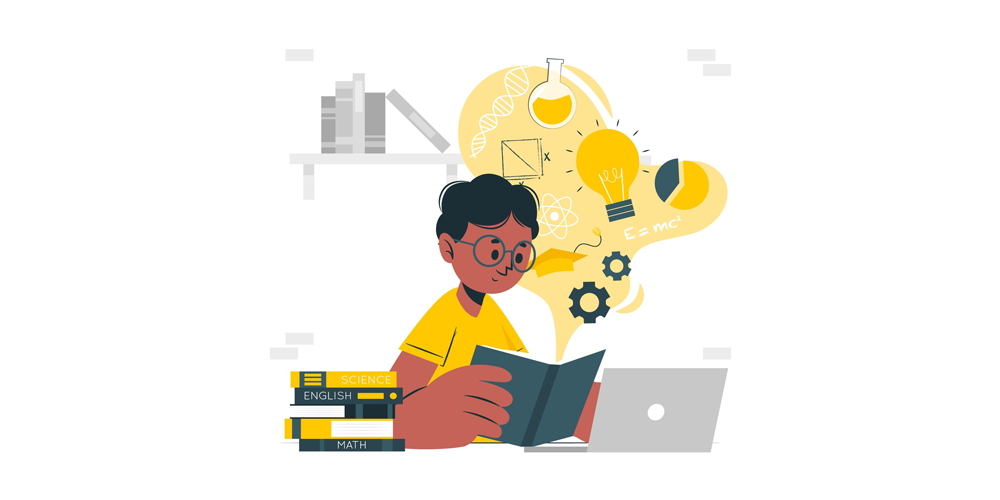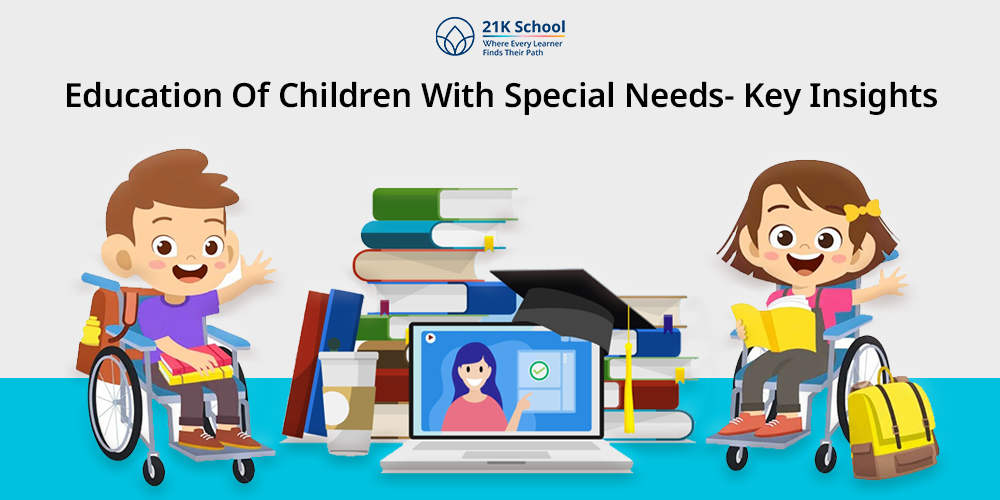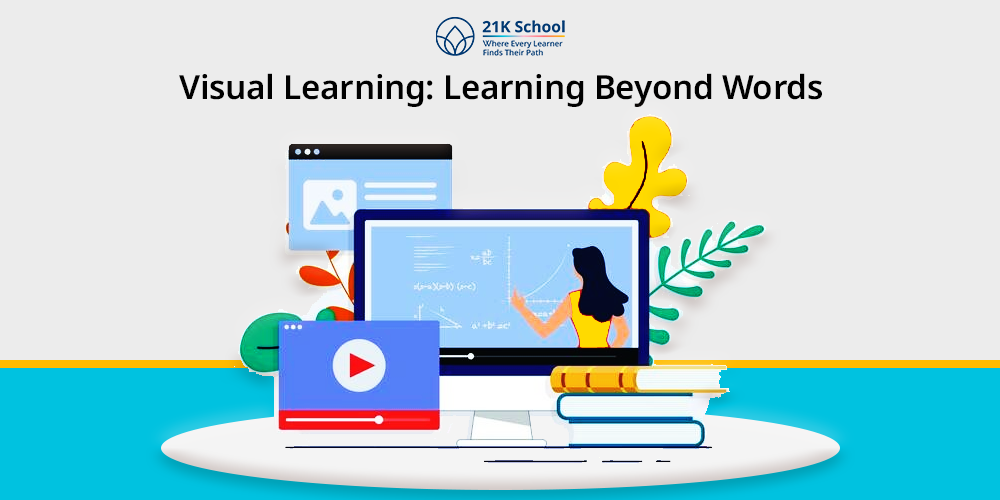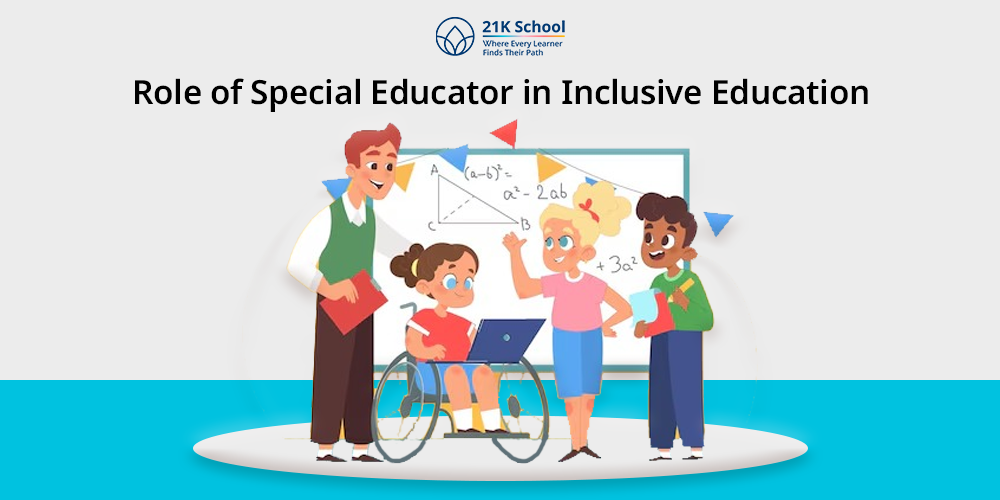
Modern world requires a modern solution. In today’s fast growing world where technology permeates every aspect of our lives, it is absolutely vital to prepare our children to survive in this contemporary world.
One of the tools that is transforming our native ways of education is ICT or Information and Communication Technology. ICT in education not only helps to enhance learning but also bridges the gap in our current education system.
Contents
What is ICT in Education?
ICT stands for Information Communication and Technology, it is a broader definition of Information Technology (IT) that encompasses all the forms of communication, including satellite, wireless, networks, radio, television, internet, mobile phones, social media and more.
ICT is the process of implementing technology and technical resources into class education that enables students to enhance their learning engagement.
ICT in education has grown to be an important component of all educational institutions, which enhances the teaching and learning methods.
Technology has changed the education system by implementing IT practices. ICT in education helps in promoting equal and inclusive education in every educational institution.
Integration of ICT in the classrooms is an academic choice of the teacher, and should always include collaboration and deliberate planning
Concept of ICT in Education
Information and communication technology encompasses all the infrastructure and components that support modern computing. It enhances the way we create, work and even communicate with each other.
ICT has redefined various aspects of our daily lives such as Medicine, Communication, Data Sharing and even Education, bringing a wave of transformation.
To define ICT in a single line, any technology, device or infrastructure that enables data sharing, communication and global connectivity falls under the umbrella term ICT.
Technologies Included in ICT
The internet, internet of things (iOT), metaverse, virtual reality (VI), artificial intelligence (AI), and social media are also part of ICT, along with cloud computing services, video conferencing and collaboration tools, unified communications systems and mobile communication networks.
Upcoming technologies such as 5G/6G, Web3, and quantum computing are also a part of the vast ICT universe.
ICT in Education
Information and Communication Technology (ICT) has emerged as a powerful tool that is reshaping the landscape of modern education.
From enhancing learning experiences to bridging educational gaps, ICT’s integration into classrooms has brought about a revolution that promises to redefine how we perceive and engage with education.
Importance of ICT in Education
Information Communication and Technology (ICT) plays a crucial role in enhancing active learning. ICT is not only limited to education but also helps in our daily life, as everyone is connected to technology.
E-learning evolution has integrated ICT in the classroom, enabling teachers and students to create a more adaptable, effective and engaging learning environment. Below, you can check the importance of ICT in education.
- Easy Access: ICT in education makes it simple to provide easy access to learning resources such as books, study materials, research papers and more.
Online platforms offer high-quality educational resources and educational tools to students who live in remote areas, allowing them to continue their education from a particular location without any hindrances. - Global Collaboration: ICT promotes global collaboration, where everyone can connect from any part of location. ICT enables teachers and students to communicate across any geographic boundaries without any limitations. ICT helps in promoting cultural diversity and networking opportunities.
- Practical Exposure: ICT provides practical exposure by reducing the gap between theoretical learning and practical education. ICT allows students to indulge in interactive sessions that allow them to gain real-life experiences.
ICT allows students to intensify their problem-solving skills through simulation, VR/AR, Illustrations, virtual labs, and multimedia content. - Career Advancement: ICT allows students to prepare for the modern workforce and meet the demanding needs of the 21st century.
ICT enables children to gain digital literacy, coding skills, digital accessories, familiarity with technical knowledge and so on, which enable students to access future employment opportunities. - Maintains Transparent System: With the help of the integration of ICT it allows for providing a transparent system in education.
By digitalisation of the entire schooling process, transparent records can be maintained that will give easy access to teachers, students, parents, and office staff. This helps to check accurate data, and it allows for checking any physical issues.
Role of ICT in Modern Learning
ICT plays an integral role in providing quality education, as it enhances the teaching and learning process as well as promotes inclusive education. Online resources allow students to study subjects more thoroughly at their own pace and learning ability.
ICT in modern learning has transformed the method of traditional schooling to be more engaging and accessible. ICT is not only limited to students, but it also helps teachers in many ways.
Here are the roles of ICT in modern learning for both students as well as teachers.
1. ICT for Students
- Promotes Smart Classrooms: ICT helps in establishing smart classrooms, with the help of IoT and technological resources.
Through ICT, students become more engaged in study sessions as it requires the use of digital tools, such as 3D animations, games, stories, etc. This allows teachers and students to create a positive learning environment. - Provides Personal Learning: ICT enables teachers to provide personalized and customized education to students. As every student has their own learning style and adaptability, it is essential to provide education according to their need to get a positive outcome.
ICT includes the use of digital tools that allow educators to understand the needs of students through feedback or comments. - Interactive Education: Through ICT in education, students become more engaged and feel classes are more interactive. As implementation of ICT includes digital tools such as display boards, multimedia systems, AR/VR, etc.
This allows kids to stay engaged and concentrated, which allows children to study with full potential. - Promotes Digital Literacy: ICT enables students to gain knowledge of digital literacy. Integration of ICT aids in the development of digital skills such as data analysis, coding and e-learning, and so on, to enhance the learning outcomes in this digital world.
- Bridging Digital Divide: ICT helps in bridging the gap between theoretical knowledge and practical knowledge, as well as promotes equal and quality education to everyone.
ICT also helps in connecting the gap of digital divide by providing e-learning resources that allow students to get quality education without any challenges or hindrances.
2. ICT for Teachers
- Better Feedback Assessment: ICT enables teachers to assess students by using formative assessment tools. ICT tools allow teachers to evaluate students’ performance through digital platforms, surveys, quizzes, and online tests.
This helps them to get better results and allows them to understand the improvement and weaknesses of students. - Lifelong Learning: ICT enables teachers to achieve lifelong learning through technical skills and digital communications. Through ICT, teachers develop digital skills that help them overcome the obstacles. It helps them understand the challenges and promotes self-directed learning.
- Better Teacher-Student Relationship: ICT helps teachers to build positive relationships with students.
Teachers who possess empathy and emotional intelligence are better able to establish solid, trustworthy bonds with their students, which fosters a healthy and more encouraging learning atmosphere, and enables them to create a positive learning environment. - Classroom Management: With the help of ICT, teachers can effectively manage classrooms without any conflict and help to solve related problems and issues.
As ICT includes the use of technology, it makes most work automated, which helps teachers to understand the behavior of each student, allowing them to build a positive learning environment irrespective of any challenges. - Reduce Depression and Stress: ICT involves the use of technological resources, which allows teachers to stay active and relaxed.
It reduces anxiety and stress among teachers by helping them with making work. This reduces anger issues as well as enhances satisfaction and promotes effectiveness.
How to Use ICT Tools in the Classroom?
Implementing ICT tools in the classroom is one of the effective ways to enhance the teaching and learning process, and allows for promoting a positive learning environment.
In order to use ICT tools in the classroom, teachers can use effective methods and platforms to encourage students’ participation. Tools such as Google Classroom, Google Meet, Slack, Presentations, Microsoft Teams, etc.
Can be used to promote collaboration, encourage student autonomy and learning objectives. Here is how you can use ICT tools in the classroom.
- Create Interactive Lessons: With the help of ICT in education, teachers can make interactive and engaging classes. Learning apps, interactive panels, smartboards and screens can be used to integrate images, videos and animations into lessons.
This improves student comprehension of difficult concepts and makes learning more interesting. - Start Online Homework: Providing students with ICT enables them to study effectively. Giving students homework via an online learning platform is one of the effective ways to integrate ICT in the classrooms. Online work helps students to become more engaged and organized.
- Prepare Digital Grading System: ICT enables teachers to create a digital grading system that allows transparent and effective learning aspects.
Online grading allows students and parents to understand the weaknesses and strengths of students’ learning experiences. This also helps in analyzing students’ data and gives digital access to results. - Provide Fast Assessment: Through ICT, teachers can prepare quick and easy assessments for students, which enables them to get quick feedback to analyse students’ performance.
Through various online tools, students and teachers can conduct quizzes, exams, MCQs, puzzles, etc. This helps students to understand the concepts more easily and allows educators to effectively understand their weaknesses. - Use E-Resources: ICT enables teachers to use various e-resources to enhance students’ learning outcomes. E-Resources such as PDFs, e-books, virtual labs, virtual platforms, video lessons, etc. Helps in making classes more engaging and interesting.
Benefits of ICT in Education
ICT in education improves educational standards by optimizing personalized learning and by providing high-quality digital teaching resources. ICT allows kids to develop cognitive skills and enhance concentration levels.
Implementation of technology in education not only improves academics but also helps in achieving lifelong learning. Below you can check the benefits of ICT in Education.
1. Enhance Concentration:
ICT enables the use of digital tools and technology to enhance the learning outcomes, which leads to an enhancement of concentration.
Use of technology enables students to gain practical exposure, which helps them to understand real-world scenarios, leading to developed concentration.
2. Boost Critical Thinking:
Implementation of ICT enables students to effectively think and communicate, which provides different perspectives of view to students.
This aspect helps children to develop critical thinking skills and promote holistic education.
3. Equal Education:
By using ICT, students can access all educational resources and equal opportunities from any location, irrespective of any challenges.
Students with physical disabilities or those who are unable to attend regular classes can benefit from ICT education through online learning and e-learning platforms.
4. Career Advancement:
By integrating ICT into the classroom, students can be better equipped to meet the demands of the modern workforce.
Students can access future employment opportunities through digital literacy, coding comprehension, familiarity with digital resources, and technical knowledge.
5. Promotes Digital Literacy:
ICT helps in promoting digital literacy among students and teachers.
ICT promotes Digital literacy by implementing modern methods of technological education by using digital boards, Learning Management Systems (LMS), e-books, educational apps, online teaching platforms, and other tools to effectively engage and motivate students.
6. ICT encourages enhancement of learning experience
One of the most valuable contributions of ICT is the enhancement of learning experience for the students. Technologies such as gamification of lessons, use of digital media resources and interactive software makes daily classes more fun and engaging.
Also Read, Steps To A Successful Hybrid Learning Experience.
7. ICT offers personalised learning for every student
ICT offers adaptive learning technologies that helps to analyse a student’s performance and personalise the lesson that is best suited for the student, so he or she can learn at their own pace.
This tailored approach of learning suits the diverse learning styles ensuring the best learning experience for the students.
Innovations such as Learning Management Systems (LMS) like Moodle and Blackboard offer a structured platform where teachers can track student progress, assign tasks, and provide feedback, creating a more organised and efficient learning environment.
8. ICT bridges educational gap
With the help of ICT, education can now be accessible even to the remotest part of the world. Every child is ensured the best possible education regardless of the location and situation with the help of e-learning or digital learning methods.
21K School is a virtual school that enrol students for Nursery through Grade 12.The School follows an annual academic calendar and conducts live classes online for 1-4 hours, 5-6 days a week. (depending on the Grade)
Challenges of ICT in Education
There is no doubt that ICT enhance the teaching and learning process and builds social skills. ICT have the potential to be an effective tool for expanding formal and informal educational opportunities.
ICT also helps teachers to improve educational outcomes and helps them in analyzing students’ performance. Even with lots of benefits and quality, ICT still faces lots of challenges in being implemented in schools and educational institutes.
Below, you can check the challenges faced during the implementation of ICT in education.
- Lack of Teacher Training: One of the major challenges that hindrances the implementation of ICT in the classroom is a lack of adequate teachers’ skills.
As many teachers don’t have adequate knowledge or skills in technology and modern terminologies to teach students due to, it becomes tough for them to be implemented in schools. This can be overcome by providing quality training to teachers about ICT and technological aspects. - Resistant to Change: One of the major challenges that stops the potential of ICT is resistance to change in teachers and students.
Many teachers and students are accustomed to the traditional method of teaching and learning style, and adapting to a new learning method is very hard for them.
Due to this, they find it difficult to cope with technology and new teaching skills, which hinders the process of implementation of ICT in education. - Shortage of Resources: Implementation of ICT in education requires lots of resources and materials such as computers, tablets, printers, projectors, smart displays, etc.
Lack of these resources causes hindrances in achieving goals. Lack of proper hardware and software is also a great issue in adopting ICT in education. - Lack of Funds: Shortage of funding is one of the major reasons that cause problems in the setup of ICT in education.
Proper budgets and funding from government sources are very much essential to promote ICT in schools, as a good budget helps to set up infrastructure, resources, facilities, and so on. - Lack of Multilingual Support: Most ICT are in the English language, which hinders the true potential of multilingual education.
As the majority of e-learning content is in the English language and students who reside in rural areas will face difficulty due to the absence of multilingual education, as they mostly focus on regional content.
Examples of ICT Tools in Education
ICT tools in education include a broad range of technologies from software like learning management systems (LMS) and educational apps to hardware like computers and projectors, all of which are intended to improve teaching and learning.
Here are examples of ICT tools in education.
1. Google Classroom:
Google Classroom is an interactive virtual learning platform that enables teachers to conduct classes effectively. The main motto of Google Classroom is to make education paperless, as this provides various educational software and websites through which educators can make assignments.
Google Classroom allows teachers to include YouTube videos, games, presentations, slideshows, etc, to enhance learning outcomes.
2. Blackboard
Blackboard is an incredible digital tool that uses LMS to provide a quality education and assessment system.
Through the blackboard, teachers can effortlessly administer assessments, track student progress, oversee the curriculum and even upload grades. This also enables students and parents to see their grades directly through the platform.
3. Zoom
Zoom is a video interaction software that provides real-time communication. One of the most popular resources for online education is Zoom, which makes it simple for educators and learners to collaborate from any location.
It facilitates interactive and seamless online learning performance. By using Zoom, teachers can hold live sessions, share their screens and have group discussions.
4. Kahoot
Kahoot is another amazing platform that uses interactive games, quizzes and surveys to make learning enjoyable. Teachers can use pre-made quizzes or make their own quizzes to test students’ knowledge in an interactive way.
It is a popular tool for both in-person and online learning because of its engaging nature and gamification learning.
5. Slack
Slack facilitates asynchronous communication and student-to-student interaction. Students are free to engage in conversations, share ideas and pose questions outside of the classroom.
As a result, teaching becomes a little more informal, and students are allowed to express their opinions and provide any relevant information.
Conclusion
The integration of ICT into the curriculum opens doors to new opportunities for students as well as the teachers.
Apart from the various benefits we read about earlier, ICT in education helps to make the daily lessons fun and engaging for the participants.
It boosts better results, more collaboration, inclusive learning and instils a lifelong love of learning in the students.



